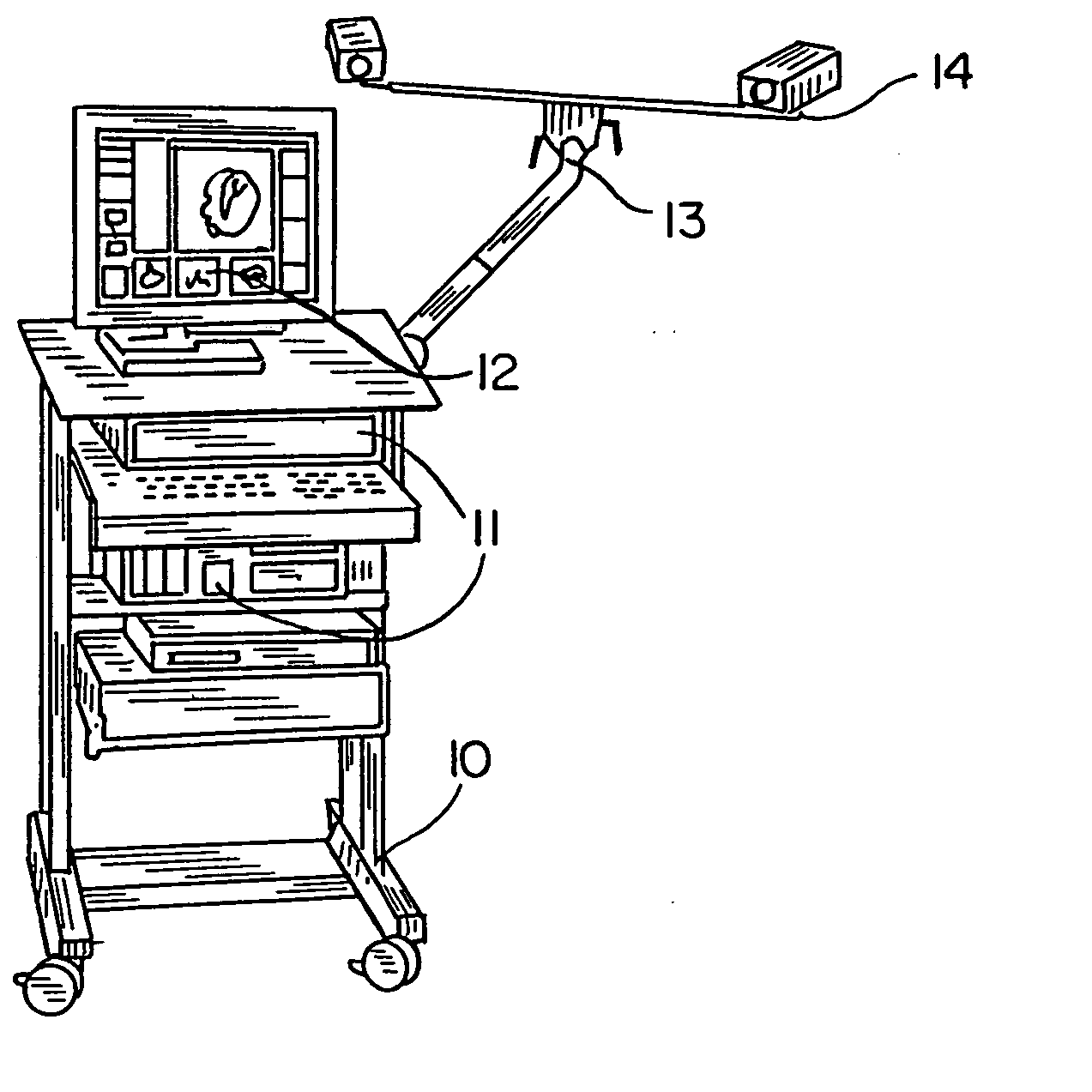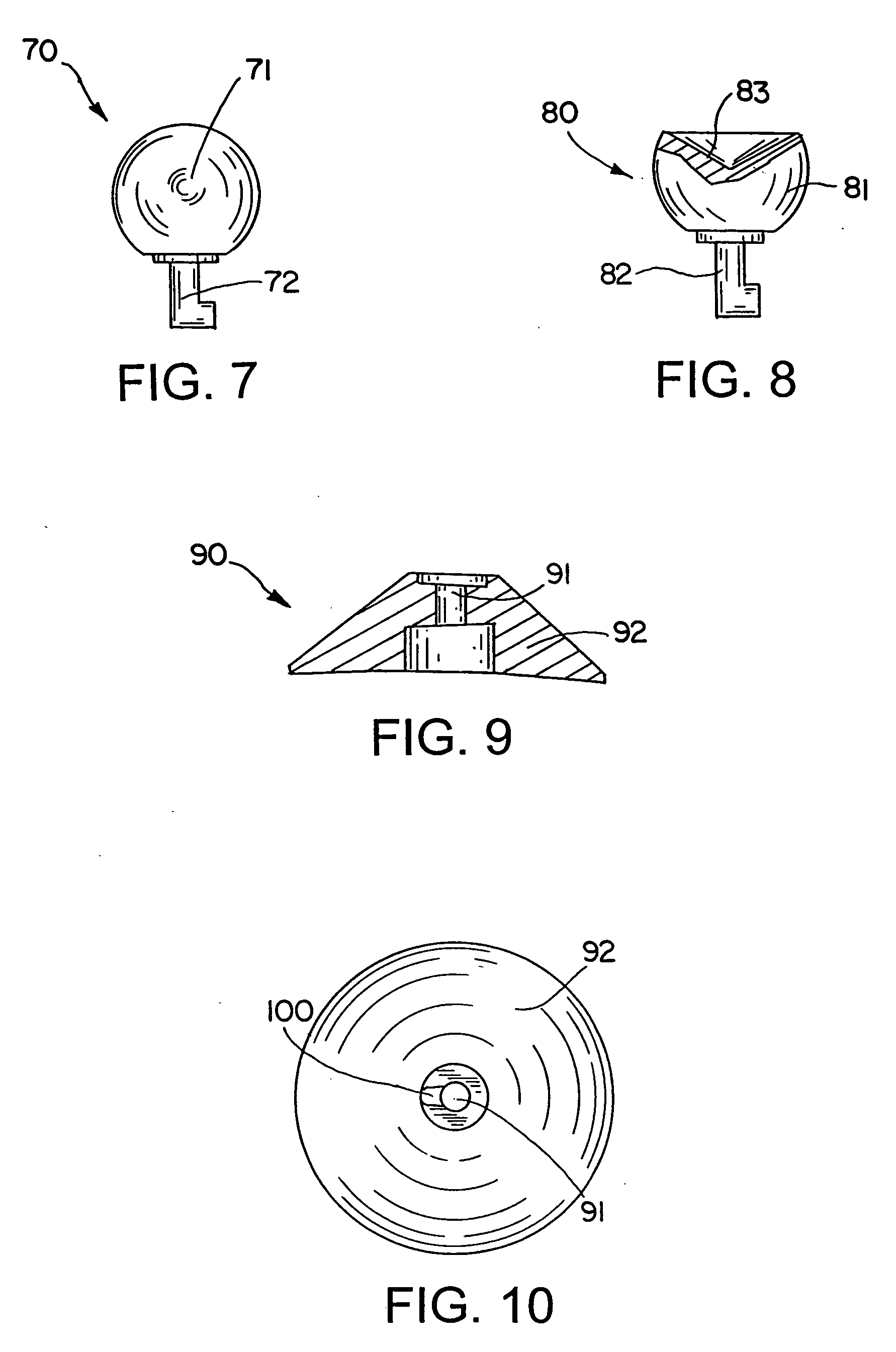Neuro-navigation system
a navigation system and neuronal technology, applied in the field of neuronal navigation system, can solve the problems of no longer being able to precisely position, no longer being able to access the precise position, and known landmarks, once affixed to the patient, no longer being removable, etc., and achieve the effect of accurate positioning
- Summary
- Abstract
- Description
- Claims
- Application Information
AI Technical Summary
Benefits of technology
Problems solved by technology
Method used
Image
Examples
Embodiment Construction
[0080] In an operating theater in which the Neuro-navigation system in accordance with the invention is put to use, a frame as identified by the reference numeral 10 in FIG. 1 stands, for example, at one end of an operating table. Accommodated in this frame is a computer unit 11 and various other control units such as, for example, a keyboard (not identified). Connected to this computer unit is the monitor 12 placed on the frame. This monitor displays in various views, also in a three-dimensional view, section planes or images of the anatomy of the patient, it also showing the positions of surgical instruments or reflectors attached to these instruments and to the operation apparatus. Additional information may be output in further fields on the screen.
[0081] Likewise secured to the upper part of the frame, on which the monitor 12 stands, is the camera mount 13. This camera mount 13 is configured adjustable and carries at the ends of its upper arms two infrared cameras, identified ...
PUM
 Login to View More
Login to View More Abstract
Description
Claims
Application Information
 Login to View More
Login to View More - R&D
- Intellectual Property
- Life Sciences
- Materials
- Tech Scout
- Unparalleled Data Quality
- Higher Quality Content
- 60% Fewer Hallucinations
Browse by: Latest US Patents, China's latest patents, Technical Efficacy Thesaurus, Application Domain, Technology Topic, Popular Technical Reports.
© 2025 PatSnap. All rights reserved.Legal|Privacy policy|Modern Slavery Act Transparency Statement|Sitemap|About US| Contact US: help@patsnap.com



